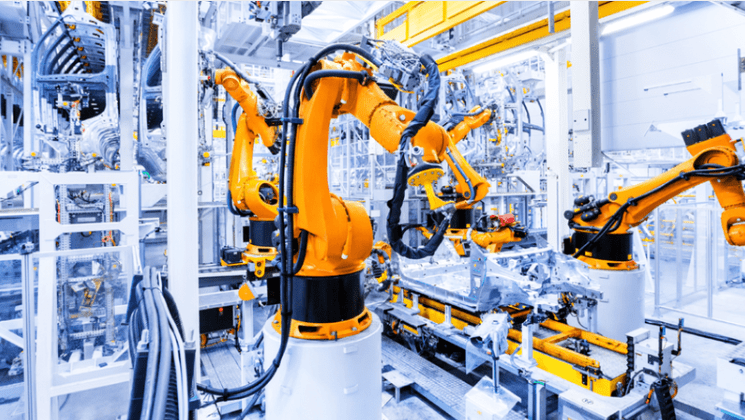The rise of Robotics Process Automation (RPA) in workplaces is transforming industries and redefining business operations. This technology allows organizations to automate repetitive, mundane tasks using software robots, enhancing efficiency and productivity while freeing up employees for more meaningful work. As RPA adoption continues to grow, companies of all sizes are exploring its potential to improve operations, reduce costs, and drive innovation. This article delves into the various ways RPA is shaping the modern workplace, from its benefits to its challenges and impact on employees.
What is Robotics Process Automation (RPA)?
Defining RPA and Its Core Components
Robotics Process Automation (RPA) involves the use of software bots or digital workers to automate repetitive and time-consuming tasks that were traditionally performed by humans. These bots are programmed to follow specific rules and can work across various systems and applications. RPA technology mimics human behavior to perform tasks like data entry, invoice processing, and email management, among others.
The core components of RPA include bots, workflow automation, and integration with various applications. Bots can perform tasks by interacting with existing software systems and completing processes much faster and more accurately than humans. Over time, RPA systems learn from data, allowing them to continuously improve and handle more complex tasks.
Key Technologies Behind RPA
RPA is built upon several key technologies, including artificial intelligence (AI), machine learning (ML), optical character recognition (OCR), and natural language processing (NLP). These technologies enable RPA bots to make decisions, understand unstructured data, and handle tasks that require some level of judgment.
For example, with NLP, RPA bots can interpret and process natural language, allowing them to manage tasks like customer service queries or document analysis. As these technologies evolve, RPA systems are becoming smarter and capable of handling more sophisticated workflows, driving further efficiency in the workplace.
Benefits of RPA in the Workplace
Improving Efficiency and Productivity
The primary benefit of RPA is its ability to significantly improve efficiency and productivity in the workplace. By automating repetitive tasks, businesses can streamline operations and reduce the time spent on manual work. For instance, RPA can automate data entry tasks, freeing up employees to focus on more valuable work like decision-making and strategy development. This leads to faster processing times, fewer errors, and a more efficient workflow.
With RPA handling routine tasks, organizations can scale operations more easily without the need to hire additional staff. This scalability is particularly important for businesses experiencing rapid growth or fluctuations in demand. As a result, companies can maintain operational continuity and ensure that tasks are completed consistently, even during peak periods.
Reducing Operational Costs
Another major advantage of RPA is its ability to reduce operational costs. By automating manual tasks, companies can significantly cut down on labor costs. RPA bots can work 24/7 without the need for breaks or holidays, resulting in a higher output with fewer human resources. This reduction in labor costs is especially impactful in industries where labor-intensive processes are common, such as finance, healthcare, and customer service.
Furthermore, RPA reduces the need for human intervention in routine tasks, leading to fewer errors and a reduction in the time spent on rework or quality control. By increasing accuracy and reducing the time required for tasks, businesses can see a return on investment (ROI) much faster.
Enhancing Accuracy and Compliance
RPA also helps improve accuracy in business operations. Unlike humans, software robots do not suffer from fatigue or distractions, allowing them to perform tasks with high precision. This results in fewer mistakes and ensures that processes are carried out in compliance with company policies and industry regulations. For example, RPA can help maintain accurate financial records, ensure tax compliance, and verify the integrity of customer data.
For companies operating in highly regulated industries, RPA provides a way to ensure that every task is executed according to the necessary standards and guidelines. This not only reduces the risk of errors but also mitigates the potential for compliance violations, which can result in costly penalties.
Impact of RPA on Employees
Shifting Job Roles
As RPA continues to be implemented in workplaces, it is shifting job roles and responsibilities. While some fear that automation will replace human workers, the reality is that RPA is more likely to augment human roles rather than eliminate them. By taking over repetitive and mundane tasks, RPA allows employees to focus on more complex and strategic activities.
For instance, employees who previously spent their time entering data or processing invoices can now engage in tasks that require problem-solving, creativity, and critical thinking. This shift has the potential to enhance job satisfaction and provide employees with opportunities to develop new skills and take on more meaningful work.
Upskilling and Reskilling the Workforce
The rise of RPA also creates an increased demand for employees with the right skills to manage and optimize RPA systems. While RPA handles the automation of tasks, human workers are still needed to oversee these systems, ensure they function properly, and make adjustments when necessary. As a result, there is a growing emphasis on upskilling and reskilling the workforce.
Businesses are investing in training programs to help employees develop skills in areas like RPA development, process automation, and data analytics. These programs help workers transition from manual, repetitive roles to positions where they can contribute more directly to the organization’s innovation and strategic goals.
Improving Employee Engagement and Satisfaction
By automating mundane tasks, RPA contributes to employee engagement and satisfaction. When workers are freed from repetitive activities, they can focus on tasks that are more stimulating and rewarding. This shift can lead to increased morale and productivity, as employees feel that their time is being utilized in more meaningful ways.
Additionally, RPA can help reduce the stress associated with high-volume, repetitive work. By handling tasks like document management or data processing, RPA allows employees to engage in more creative, problem-solving tasks that require human judgment. This, in turn, fosters a more positive work environment and promotes greater job satisfaction.
Challenges of Implementing RPA
Initial Investment and Setup
One of the primary challenges of implementing RPA is the initial investment required for the technology. While RPA can lead to significant long-term savings, the upfront costs of purchasing software, implementing systems, and training employees can be substantial. Companies must carefully assess the potential ROI before committing to RPA implementation.
Additionally, businesses need to ensure that their existing systems and processes are compatible with RPA. Integration with legacy systems can be complex and may require customization, which adds to the overall cost and time required for deployment.
Managing Change and Employee Resistance
The introduction of RPA often requires significant change management efforts. Employees may feel threatened by the introduction of automation and fear that it will lead to job losses. To address these concerns, businesses need to engage in open communication, educate employees about the benefits of RPA, and provide training and support throughout the implementation process.
Effective change management is critical to the success of RPA adoption. By emphasizing that RPA is designed to complement human workers rather than replace them, organizations can ease employee fears and encourage acceptance of the new technology.
Ensuring Long-Term Success
For RPA to be truly successful, businesses must continually monitor and optimize their systems. While RPA can automate tasks effectively, it requires regular updates and maintenance to ensure that it remains efficient and aligned with evolving business needs. Companies must establish ongoing processes for reviewing and improving their RPA implementations to maximize their effectiveness over time.
Additionally, businesses should be prepared to adapt their processes as they discover new opportunities for automation. As RPA technology advances, organizations will need to stay updated on the latest trends and innovations to maintain a competitive edge.
The Future of RPA
Integration with Artificial Intelligence (AI)
As Artificial Intelligence (AI) continues to evolve, the future of RPA will likely involve more advanced integration with AI technologies. By combining RPA with AI, businesses can achieve higher levels of automation and efficiency. AI can enable RPA bots to handle more complex tasks that require cognitive abilities, such as decision-making and problem-solving.
This combination will allow RPA to go beyond rule-based automation, enabling bots to learn from past experiences and improve their performance over time. For example, AI-powered RPA bots could analyze customer feedback, identify trends, and make recommendations for process improvements, further enhancing business operations.
Expansion Across Industries
The potential applications of RPA are vast, and its adoption is expected to expand across industries in the coming years. While RPA is already widely used in sectors like finance, healthcare, and customer service, its reach is growing in areas such as manufacturing, retail, and supply chain management. As more businesses recognize the benefits of automation, RPA will continue to evolve and play a crucial role in driving innovation and growth.
RPA as Part of a Larger Digital Transformation Strategy
RPA is an integral part of the broader digital transformation strategy that many companies are undertaking. By automating routine processes, businesses can lay the foundation for more advanced technologies like AI, machine learning, and data analytics. RPA can serve as the first step in a larger shift toward digitizing business operations and leveraging technology to create more agile, efficient, and customer-centric organizations.
FAQs
- What is Robotics Process Automation (RPA)?
- RPA is the use of software robots to automate repetitive tasks, allowing businesses to improve efficiency, reduce costs, and enhance accuracy.
- How does RPA improve workplace efficiency?
- RPA automates manual tasks, freeing up employees to focus on more strategic and creative work, leading to faster processes and reduced errors.
- What are the main benefits of RPA?
- The key benefits of RPA include improved efficiency, reduced operational costs, enhanced accuracy, and better compliance with industry regulations.
- How does RPA impact employees?
- RPA shifts employee roles from repetitive tasks to more meaningful work, promotes job satisfaction, and creates opportunities for upskilling and reskilling.
- What challenges do businesses face when implementing RPA?
- Challenges include the initial investment, managing employee resistance, integrating RPA with existing systems, and ensuring the technology is optimized for long-term success.
- What does the future of RPA look like?
- The future of RPA includes more integration with AI, expansion across industries, and its role in digital transformation strategies to enhance business agility.



